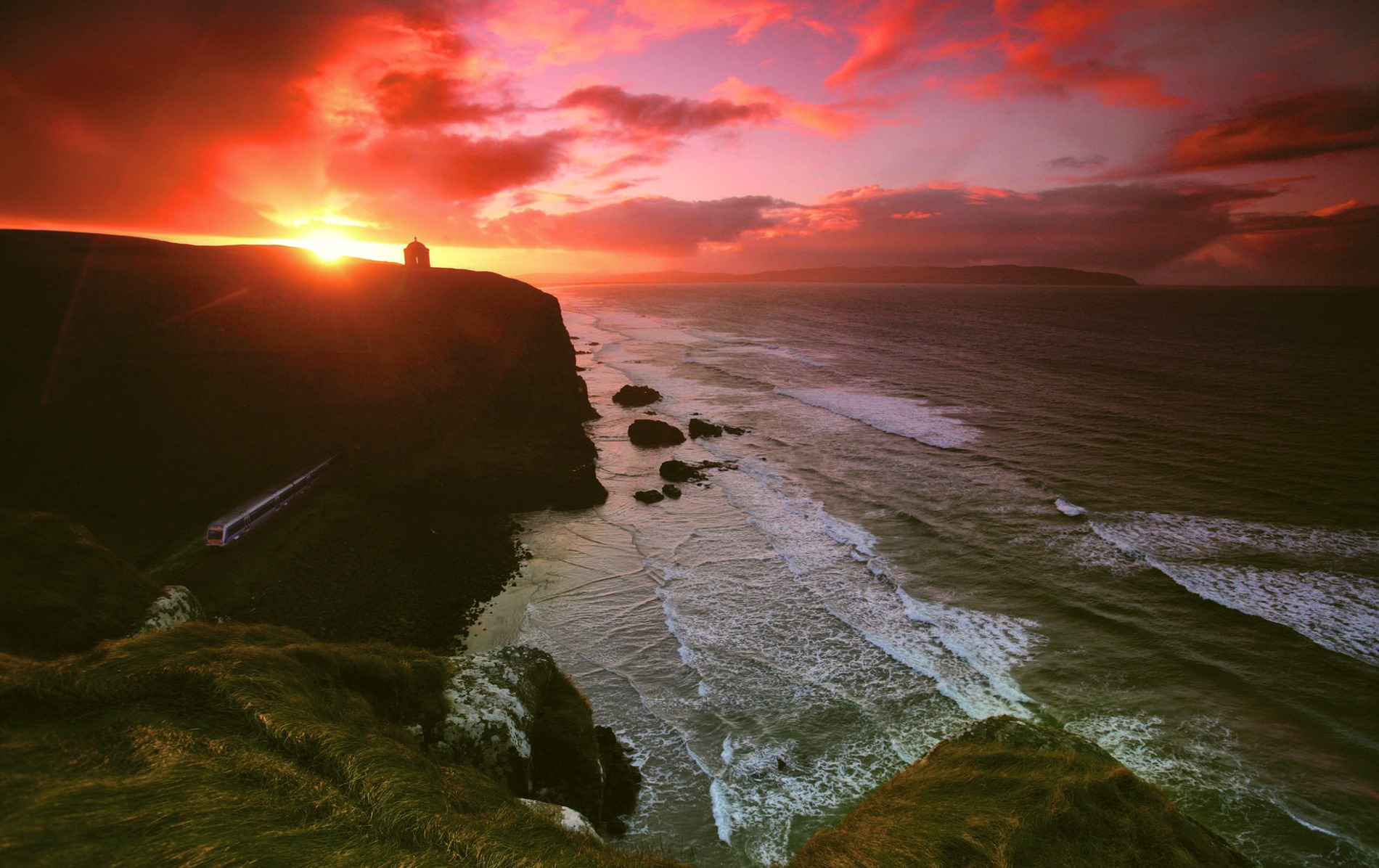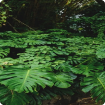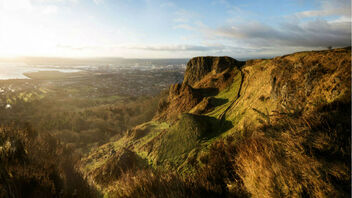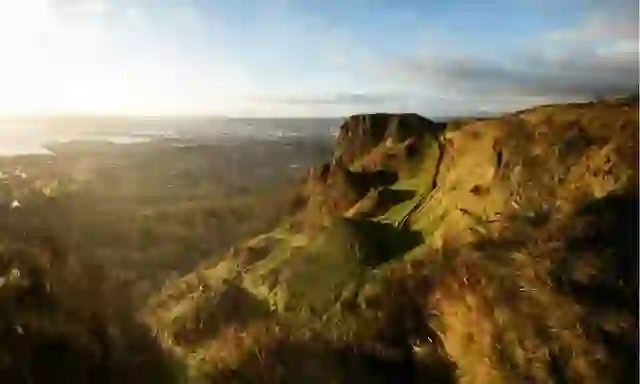
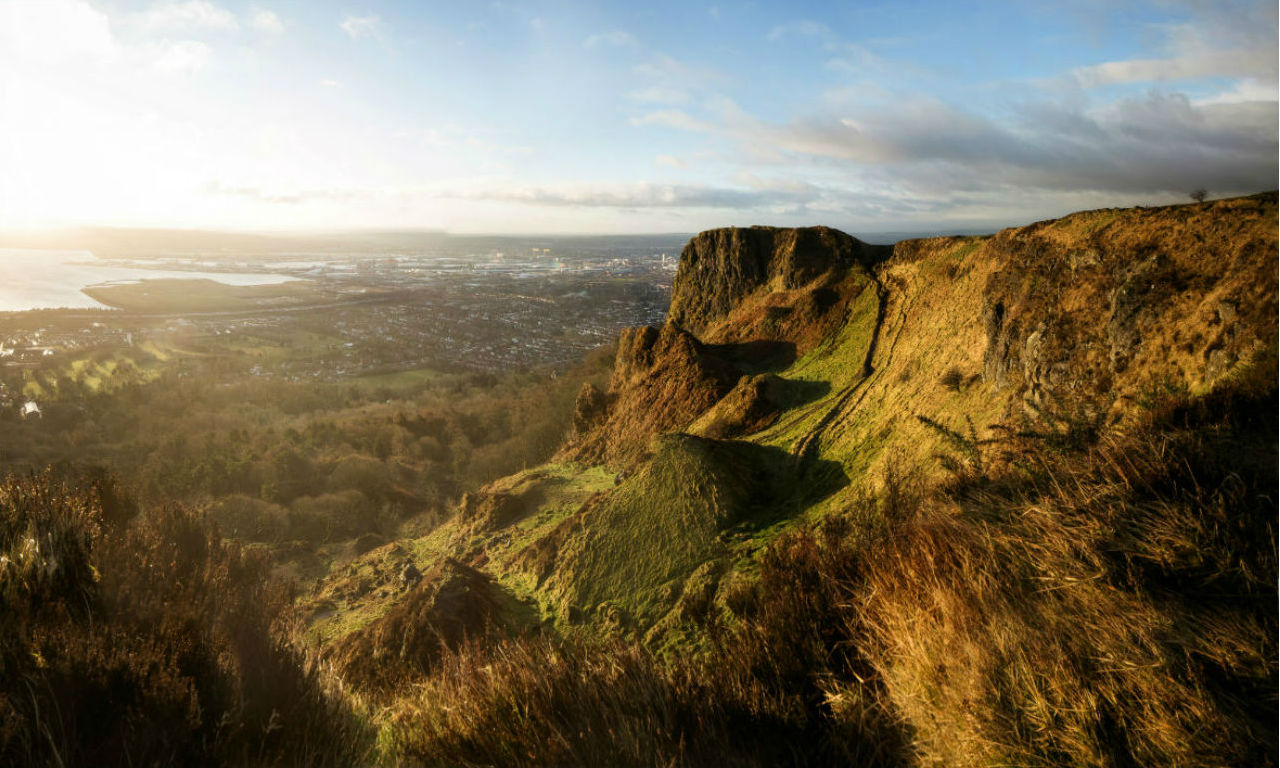
Belfast: 6 walks on the wild side


Optional Caption Text
1 Cave Hill Country Park
Topped by elegant Belfast Castle, Cave Hill Country Park is visible from pretty much anywhere in the city. And if the slopes here seem somewhat familiar, that might be because this rocky outcrop is said to have inspired Jonathan Swift’s giant in Gulliver’s Travels – hence the nickname Napoleon’s Nose. You can also follow in the footsteps – even tread the same paths perhaps – of ancient man. The park is studded with Iron and Bronze Age remains – make sure you don’t miss McArt’s Fort, a spectacular ancient rath. Hungry after your walk? The Cellar Restaurant in Belfast Castle will satisfy most appetites!


Optional Caption Text
© Outdoor Recreation NI
2 Divis and the Black Mountain
With its dark basalt rock (Divis means black ridge), the Divis Heath Trail is a standout for its views across Belfast, the Mourne Mountains and, on a clear day, all the way to Scotland. In the autumn, it’s a magnificent carpet of purple flowers, but all year you’ll find something rather special, including orchids, mosses and fungi. Look out for red grouse, stonechats, skylarks and even Peregrine falcons. And if you do make it to the top (an impressive 389 metres) you’ll see the trigonometry pillar, erected in 1825 to help map out Ireland.


Optional Caption Text
3 Lagan Towpath
A ramble along the Lagan Towpath is a wonderfully peaceful experience, especially as you’ll have to nudge yourself to remember it’s meandering through the urban buzz of Belfast all the way to Lisburn. Taking in wetlands, woods and meadows, the canal was originally paid for by a tax on all alcohol sold in the areas through which the canal would run – with work starting in 1756. It is now home to mute swans, dabchicks, ducks, moorhens and more. Explore the nearby Barnett Demesne and Malone House with its open-air sculptures and art gallery, along with Sir Thomas and Lady Dixon Park and Shaw’s Bridge – all great spots for quiet contemplation.


Optional Caption Text
4 Stormont Estate
Monumental architecture and landscaping are the big watchwords when you walk around Stormont Estate. As first impressions go, the views along the Prince of Wales Avenue, with its double rows of red-twigged lime trees, is breathtaking. Aside from the formal grounds, there are beautiful woodland trails set amongst meadows and native trees, but don’t miss out on a tour of Stormont buildings while you’re here. It has a captivating back story, including attempts to disguise it during World War II, when the Portland stone building was sprayed with tar and cow manure. Supposedly easy to remove, it turned out not to be so simple, and the building still bears the scars today.


Optional Caption Text
5 Belfast Botanic Gardens
Wander through Belfast’s Botanic Gardens, a Victorian landmark first established in 1828, and you can see some of Ireland’s most exotic and fascinating plants. Don't miss the Palm House, one of the earliest examples of a glasshouse made from curved iron and glass, which houses a range of tropical plants, lovely seasonal displays and colourful birds of paradise. Another highlight is the Tropical Ravine where the sweet scent of tropical plants such as banana, cinnamon and orchid perfumes the air. The Gardens are a favourite spot of local residents and students and also a popular concert and event venue.


Optional Caption Text
© WalkNI.com
6 Belvoir Forest Park
Paths meander from the riverside right into the forest at Belvoir. Beneath an enchanting mix of native oak trees, cedars and redwoods, only the sounds of kingfishers, jays and red squirrels disturb the peace – cosmopolitan Belfast feels a million miles away.
But as well as tranquillity, it’s laden with history. The house and gardens date back to the 1740s – the Duke of Wellington’s mother stayed here as a girl – and the first glasshouse in Belfast was built here in 1757. The house fell into ruin in the 1960s, but there’s a medieval graveyard, the 13th century Belvoir motte, built to support the Norman invasion, and an 18th century icehouse that will make any history buffs eager to explore more.





